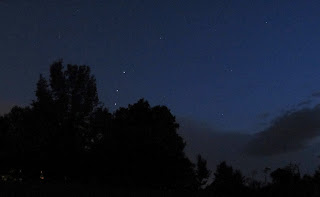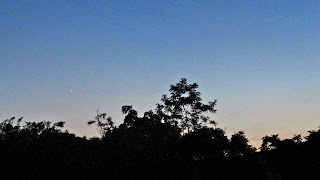
Celestial Highlights for April
4/02, 03, 04: Venus passes the Pleiades, skirting its southern edge. Before these dates, Venus rises slightly higher each evening to catch the Pleiades. After these dates, Venus lies above the Pleiades. As April progresses, Venus drops closer to the set sun each evening.
4/02: The ten day old gibbous moon forms a straight line with Regulus and Mars.
4/06: When the full moon rises high enough, about 10:30 p.m., it can be see forming a straight line with Saturn and Spica.
4/15: Saturn reaches opposition and is at its annual closest to the Earth, orbiting 810 million miles from our fair blue world. This is the best time of year to view it and its beautiful ring system.
4/15: Mars ends retrograde motion, just east of Regulus. During April and May, observe the motion of Mars in Leo. It can be found drifting slowly towards Regulus, then abruptly changing direction and begin moving away from Leo’s brightest star.
4/22: If you are inclined to test your observing skills on a challenge event, look for the thin crescent Moon sinking in the bright western twilight next to Jupiter. They both should be very low at 8:30 p.m. Binoculars will help.
4/24: For a great photo opportunity, look to the west at 9:00 p.m. for the thin crescent Moon hovering near Venus. The Moon will be full with Earthshine lending a magical air to the scene. This is the last Moon/Venus pairing before the Venus transit on June 5.
Such is our view from Earth...

















































